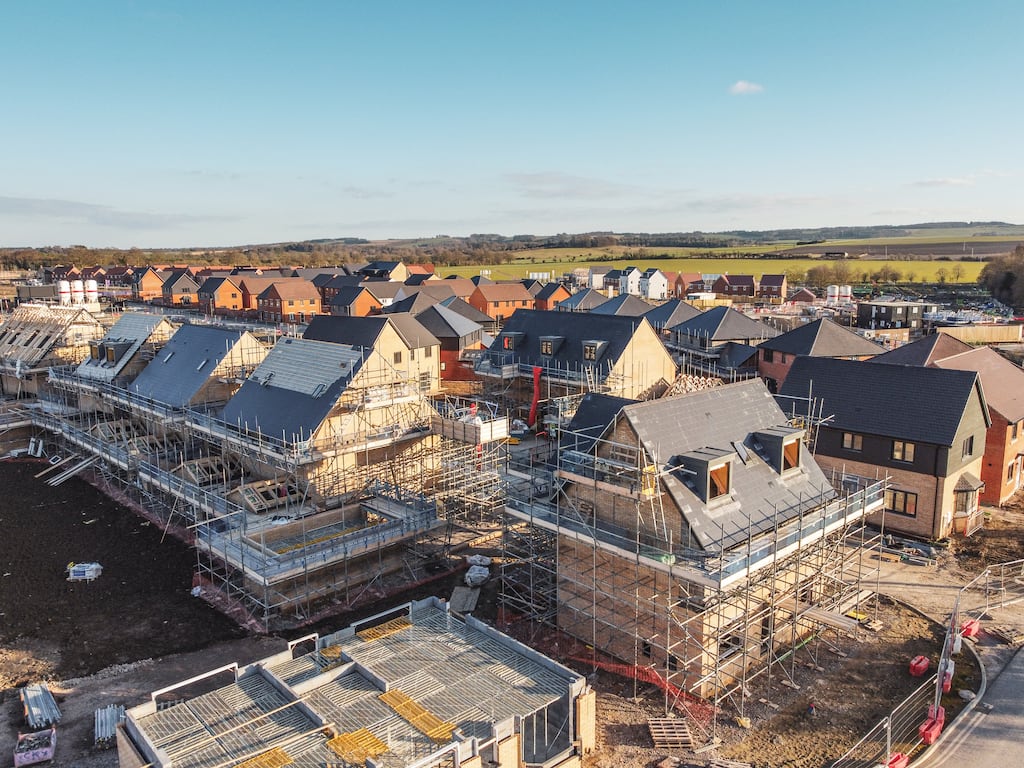Over the past three weeks or so there has been much talk about the decline in apartment construction figures and the need to abolish the current rent caps while protecting the rights of sitting tenants.
Apartment construction is important, but it makes up just over a quarter of housing output. The other 75 per cent is made up of houses and this fact has somehow been lost in the noise generated by the debate over build-to-rent apartments and rent caps.
We need a graduated property ladder that takes us though each big life stage – third-level student, shared living for young and key workers, apartments for rent, compact family living, senior and assisted living and, finally, nursing homes. At the moment, we are trying to shoehorn each stage into either an apartment or a three-bed semidetached house. It’s not working.
The Government has promised to deliver more than 300,000 units by 2030, which means we need to crank up housing output from the current level of 30,000 a year to 50,000 or 60,000 units in the next year or so.
READ MORE
Serviced land
If those targets are to be met, housing and apartment output needs to increase by 16 per cent year on year until 2030. If things stay as they are, that level of increase will not materialise.
For this to happen, the Government must cut through the noise and take decisive action. The most important issue they need to address is ensuring a sufficient pipeline of serviced land for large scale development.
Under the current regime, the steps required to supply new serviced land take far too long to implement. The implementation of the Planning Act will take 12-18 months, followed by local area plans (12-18 months), followed by servicing (12-24 months), followed by a planning application process (12-18 months). Only then, and assuming a successful planning outcome, will the new sites be ready for purchase, financing and construction.
With housing, there is a tendency to overcomplicate matters and to get distracted by the latest controversy
We need more zoned land now. The first step is to rezone previously dezoned land in under-zoned areas (described as Phase 2/Strategic Reserves by government), including the eastern, midlands and southern regions.
But land alone isn’t enough – we need serviced land. The Department of Housing must immediately appoint a senior technical infrastructure lead with a dedicated team to co-ordinate ESB, Transport Infrastructure Ireland (TII) and Uisce Éireann services. Priority should go to sites based on the number of homes these can deliver and how quickly the properties can be brought to market.
Another lever open to the Government, to speed up the lengthy Local Area Planning process, is the use of a variation to the development plan. Using this approach, local councillors can vote on a plan for new lands and if more than 75 per cent approve then it is opened to the public to make any observations they may have.
If successful, the site is activated. This method can be applied to priority sites, reducing the timeline from three to four years to just 15-18 months.
Apartments
Back to apartments. The 24 per cent fall off we saw in output last year was directly linked to the withdrawal of institutional investors from the market due to rent caps, rising costs, interest rates and an ever-changing regulatory environment.
International capital and professional landlords have a key role to play in growing supply and creating more choice and competition in the rental arena. Ultimately, this will lead to more value in the marketplace. For this to happen, rent caps for new developments should be amended – as recommended by the Organisation for Economic Co-operation and Development (OECD) – so that these apply to the lease as opposed to the overall building.
[ Landlords should be able to ‘reset’ rents between tenancies, OECD recommends ]
This means that the rent is matched to inflation during the tenancy, but can be adjusted for the prevailing market rent at the end of the lease when a new tenant moves in. A transitional arrangement may be required to protect existing tenant leases.
On the supply side, it’s important to say that apartment construction in urban settings is much more expensive and that fiscal supports to activate brownfield apartment sites are long overdue.
Planning
The third immediate issue we need to address is activating planning permissions that are not commenced. There are thousands of units that have planning permission that are close to expiration, but have not commenced for various reasons. These schemes are not financeable due to the risk that planning will expire before the building is substantially complete.
A simple one-off automatic planning extension for permissions due to lapse would open up a fresh supply of permissions that could be used. This, coupled with an extension of the Development Levy and Uisce Éireann waivers and some tweaks to current Government incentive schemes such as Croí Cónaithe, could save significant time in getting much needed homes to market. These measures are within the Government’s control and do not require major study or investment and would yield quicker results.
With housing, there is a tendency to overcomplicate matters and to get distracted by the latest controversy. Address the critical issues and clear the immediate roadblocks. That is what you do in an emergency.
Paul Mitchell is a director of construction consultants Mitchell McDermott















